
How to Use MQ-3 sensor: Examples, Pinouts, and Specs
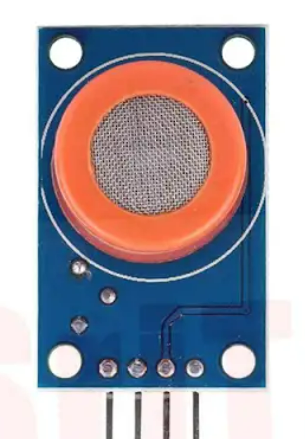
 Design with MQ-3 sensor in Cirkit Designer
Design with MQ-3 sensor in Cirkit DesignerIntroduction
The MQ-3 sensor is a gas sensor designed to detect alcohol vapors in the air. It operates on the principle of resistive change, where the sensor's resistance varies in the presence of alcohol. This change is converted into an analog output signal, which can be read by microcontrollers or other electronic systems. The MQ-3 sensor is widely used in applications such as breath analyzers, air quality monitoring systems, and alcohol detection devices.
Explore Projects Built with MQ-3 sensor
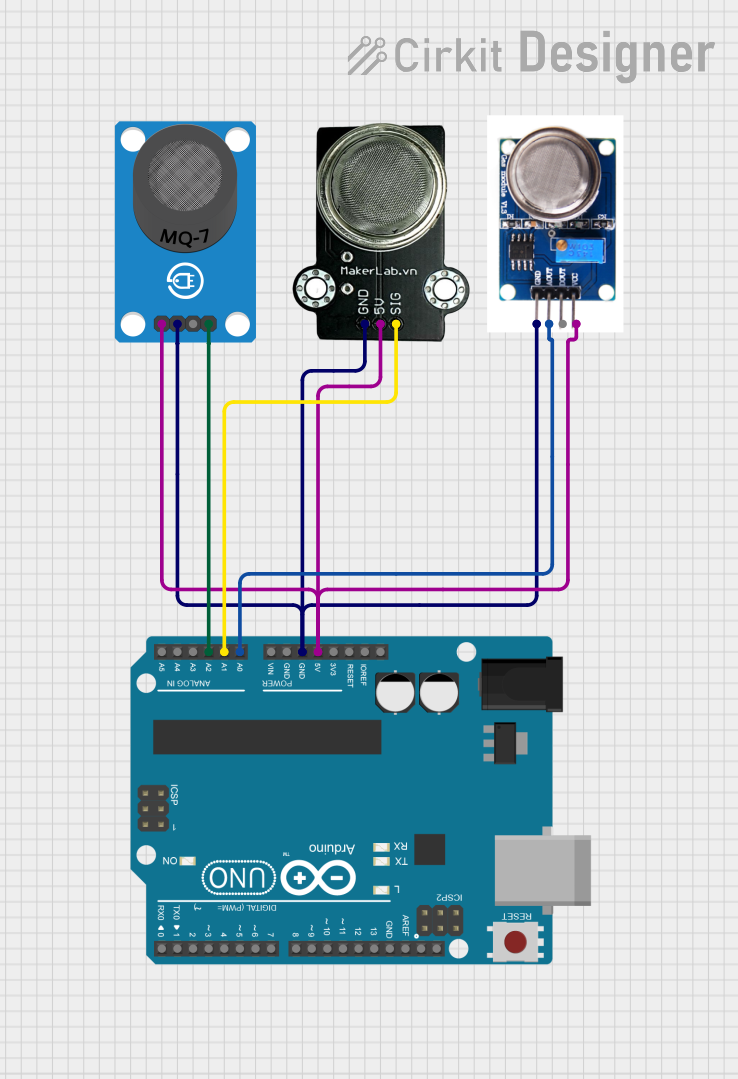
 Open Project in Cirkit Designer
Open Project in Cirkit Designer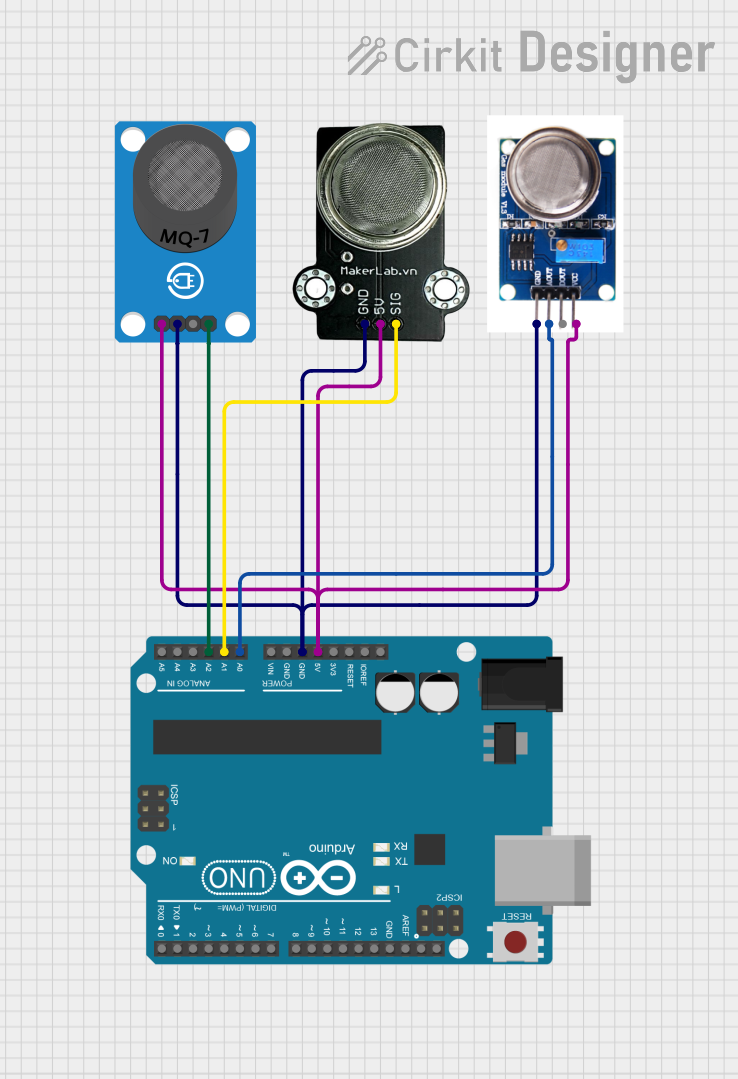
 Open Project in Cirkit Designer
Open Project in Cirkit Designer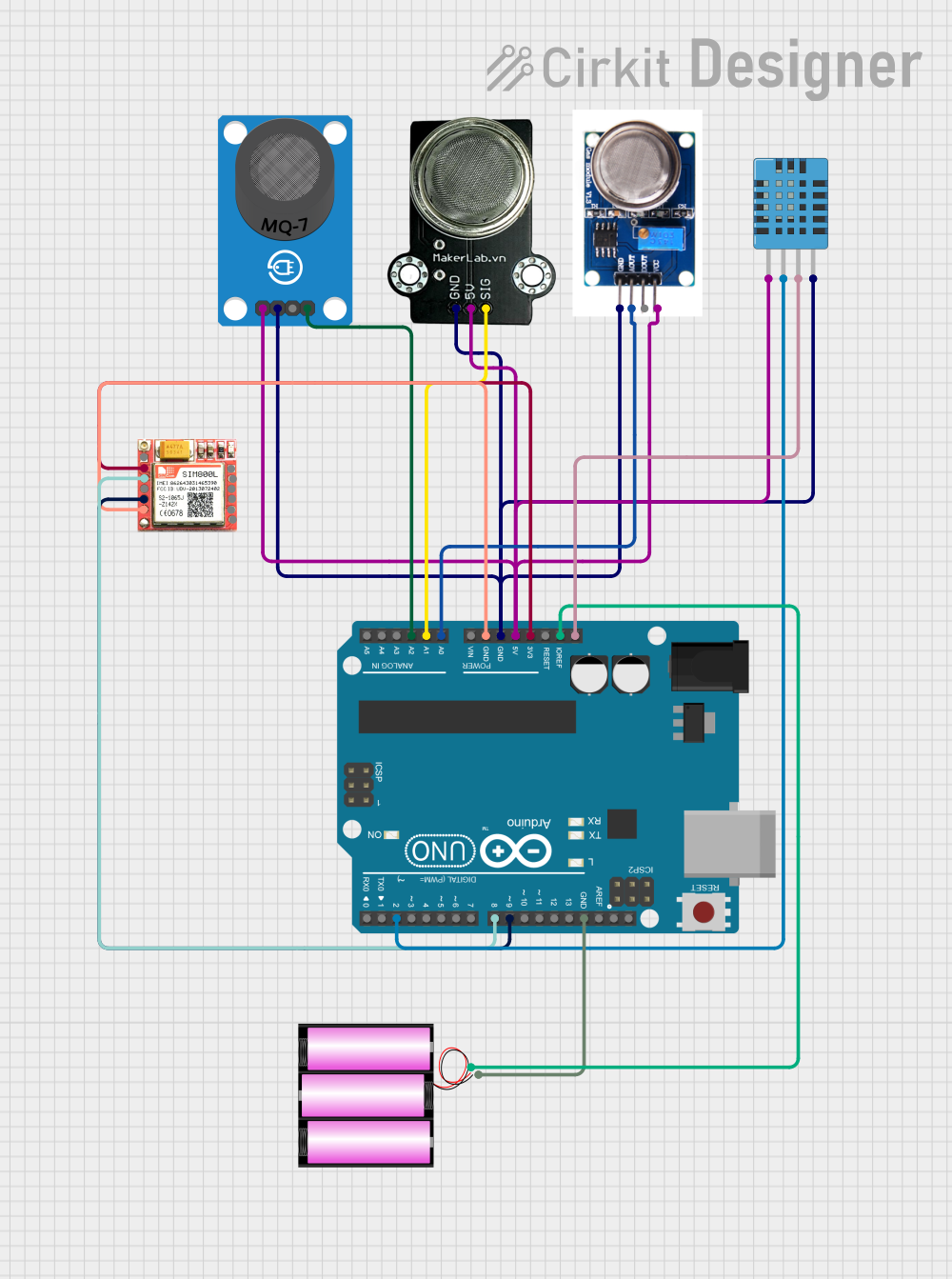
 Open Project in Cirkit Designer
Open Project in Cirkit Designer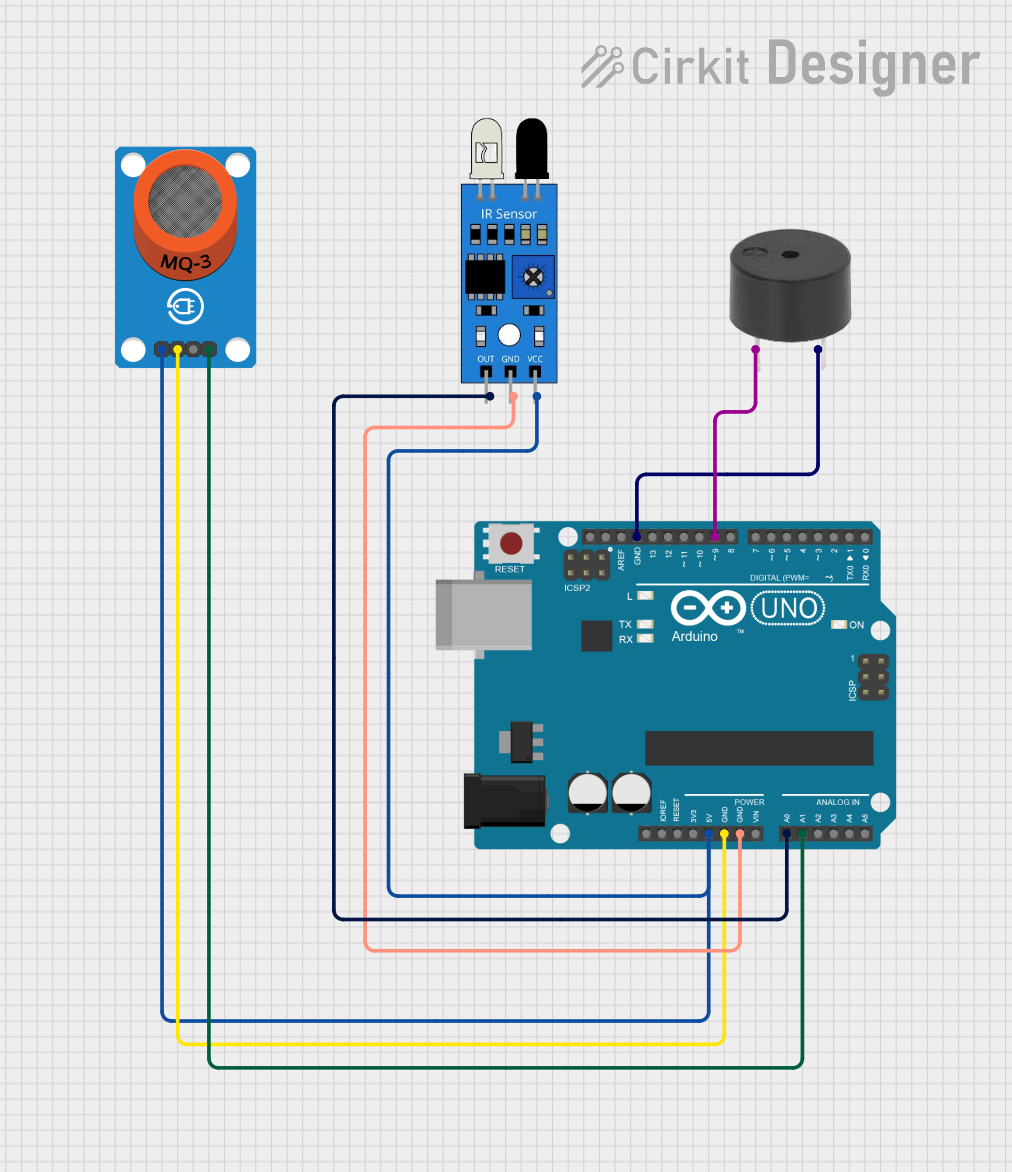
 Open Project in Cirkit Designer
Open Project in Cirkit DesignerExplore Projects Built with MQ-3 sensor

 Open Project in Cirkit Designer
Open Project in Cirkit Designer
 Open Project in Cirkit Designer
Open Project in Cirkit Designer
 Open Project in Cirkit Designer
Open Project in Cirkit Designer
 Open Project in Cirkit Designer
Open Project in Cirkit DesignerCommon Applications:
- Breath analyzers for alcohol detection
- Air quality monitoring systems
- Industrial safety systems
- Automotive alcohol detection systems
Technical Specifications
The MQ-3 sensor is a compact and reliable device with the following key specifications:
| Parameter | Value |
|---|---|
| Operating Voltage | 5V DC |
| Load Resistance (RL) | 200Ω to 10kΩ |
| Heater Voltage (VH) | 5V ± 0.2V AC/DC |
| Heater Power Consumption | ≤ 800mW |
| Detectable Gas | Alcohol vapor |
| Detection Range | 0.04 mg/L to 4 mg/L (alcohol) |
| Preheat Time | ≥ 24 hours for stable operation |
| Analog Output Voltage | 0V to 5V (proportional to alcohol concentration) |
| Operating Temperature | -20°C to 50°C |
| Humidity Range | 5% to 95% RH (non-condensing) |
Pin Configuration and Descriptions
The MQ-3 sensor typically comes with six pins, but only four are commonly used. Below is the pin configuration:
| Pin Name | Description |
|---|---|
| VCC | Power supply pin (5V DC) |
| GND | Ground pin |
| AOUT | Analog output pin (provides alcohol concentration as voltage) |
| DOUT | Digital output pin (high/low signal based on threshold) |
| H1 | Heater pin 1 (internally connected to the heater) |
| H2 | Heater pin 2 (internally connected to the heater) |
Note: The heater pins (H1 and H2) are typically pre-connected in most breakout boards, so users only need to connect VCC, GND, AOUT, and optionally DOUT.
Usage Instructions
How to Use the MQ-3 Sensor in a Circuit
Power the Sensor:
- Connect the VCC pin to a 5V DC power source.
- Connect the GND pin to the ground of the circuit.
Read the Output:
- Use the AOUT pin to read the analog voltage output, which is proportional to the alcohol concentration.
- Optionally, use the DOUT pin for a digital high/low signal if a threshold is set.
Preheat the Sensor:
- Allow the sensor to preheat for at least 24 hours before taking accurate readings. This ensures the internal heater stabilizes the sensor's performance.
Connect to a Microcontroller:
- The MQ-3 sensor can be easily interfaced with microcontrollers like the Arduino UNO. Use the AOUT pin to read the analog signal using an ADC (Analog-to-Digital Converter).
Important Considerations and Best Practices
- Preheating: Always preheat the sensor for the recommended time to ensure accurate readings.
- Calibration: Calibrate the sensor in a controlled environment to determine the relationship between the analog output and the alcohol concentration.
- Power Supply: Use a stable 5V power supply to avoid fluctuations in the sensor's output.
- Ventilation: Ensure proper ventilation around the sensor to avoid saturation or false readings due to stagnant air.
- Avoid Contamination: Keep the sensor away from water, oil, or other contaminants that may damage its surface.
Example Code for Arduino UNO
Below is an example of how to interface the MQ-3 sensor with an Arduino UNO to read the analog output:
// MQ-3 Alcohol Sensor Example Code
// Connect AOUT to Arduino analog pin A0
// Connect VCC to 5V and GND to ground
const int analogPin = A0; // Pin connected to AOUT of MQ-3
int sensorValue = 0; // Variable to store the analog reading
void setup() {
Serial.begin(9600); // Initialize serial communication at 9600 baud
Serial.println("MQ-3 Alcohol Sensor Test");
}
void loop() {
// Read the analog value from the sensor
sensorValue = analogRead(analogPin);
// Convert the analog value to a voltage (0-5V)
float voltage = sensorValue * (5.0 / 1023.0);
// Print the sensor value and voltage to the Serial Monitor
Serial.print("Sensor Value: ");
Serial.print(sensorValue);
Serial.print(" | Voltage: ");
Serial.print(voltage);
Serial.println(" V");
delay(1000); // Wait for 1 second before the next reading
}
Note: The analog output voltage from the MQ-3 sensor needs to be mapped to the actual alcohol concentration using a calibration curve, which depends on the specific application.
Troubleshooting and FAQs
Common Issues and Solutions
No Output or Incorrect Readings:
- Cause: Insufficient preheating time.
- Solution: Ensure the sensor is preheated for at least 24 hours before use.
Fluctuating Readings:
- Cause: Unstable power supply or environmental interference.
- Solution: Use a regulated 5V power supply and ensure proper ventilation around the sensor.
Sensor Not Detecting Alcohol:
- Cause: Sensor may be damaged or contaminated.
- Solution: Check for physical damage or contamination. Replace the sensor if necessary.
High Power Consumption:
- Cause: The internal heater consumes significant power.
- Solution: Ensure your power source can supply sufficient current (at least 150mA).
FAQs
Q1: Can the MQ-3 sensor detect gases other than alcohol?
A1: The MQ-3 sensor is optimized for alcohol detection, but it may respond to other gases like benzene or methane. However, its sensitivity and accuracy for these gases are lower.
Q2: How do I calibrate the MQ-3 sensor?
A2: Calibration involves exposing the sensor to a known concentration of alcohol vapor and recording the corresponding analog output. Use this data to create a calibration curve for your application.
Q3: Can I use the MQ-3 sensor outdoors?
A3: The MQ-3 sensor is not designed for outdoor use as it may be affected by humidity, temperature fluctuations, and contaminants.
Q4: How long does the MQ-3 sensor last?
A4: The sensor's lifespan depends on usage and environmental conditions. Under normal conditions, it can last several years with proper care.